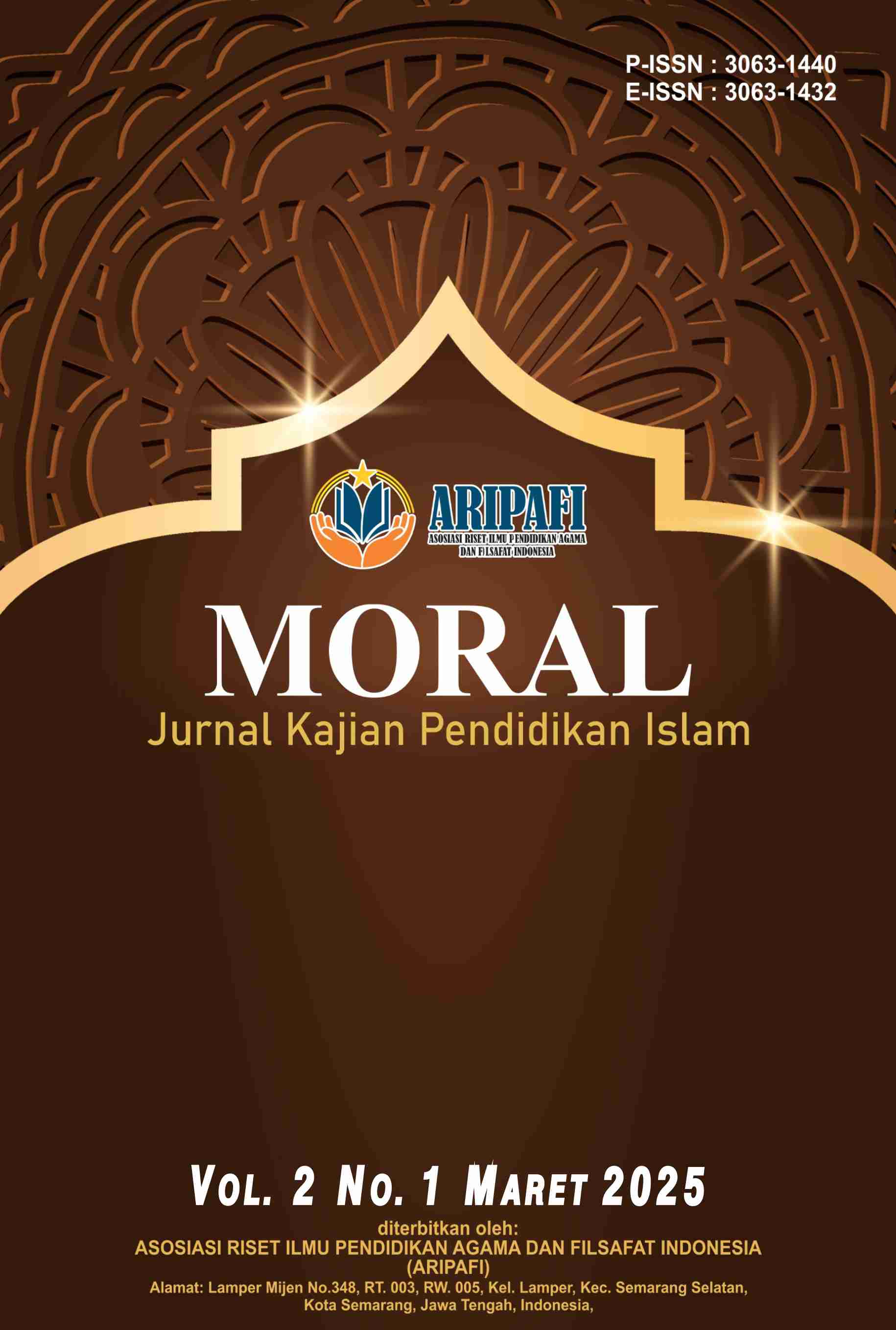Model Problem Based Learning pada Pembelajaran Al Islam di SMK Muhammadiyah 1 Batu
DOI:
https://doi.org/10.61132/moral.v2i1.561Keywords:
Model, Problem-Based Learning, Islamic Education LearningAbstract
Islamic Education in schools, particularly in fiqh materials, often faces challenges in terms of student engagement and understanding. Fiqh, which is often perceived as rigid and theoretical, requires a more engaging and applicable approach to make it easier for students to grasp the concepts being taught. This study aims to describe the implementation of the Problem-Based Learning (PBL) model in Islamic Education at SMK Muhammadiyah 1 Batu and to analyze the impact of Problem-Based Learning (PBL) on students in Islamic Education learning. The PBL model was chosen due to its ability to enhance student understanding through problem-solving that is relevant to daily life. Using a case study method, this research collected data through observation, interviews, and documentation to assess the effectiveness of the Problem-Based Learning model in improving student comprehension. The results indicate that the use of the Problem-Based Learning model can increase students' interest and understanding of Islamic Education, especially in fiqh materials, although there are some technical challenges in its implementation.
References
Afrillia, H. F., Stiawati, E. A., Yasmin, V., Pratiwi, D., & Fitriana, A. (2021). Studi literatur: implementasi model problem based learning (pbl) sebagai upaya peningkatan kemampuan berpikir kritis siswa tematik terpadu sekolah dasar. Snhrp, 189–193
Anggraeni, S. W., Alpian, Y., Prihamdani, D., & Winarsih, E. (2021). Pengembangan Multimedia Pembelajaran Interaktif Berbasis Video untuk Meningkatkan Minat Belajar Siswa Sekolah Dasar. Jurnal Basicedu, 5(6), 5313–5327. https://doi.org/10.31004/basicedu.v5i6.1636
Asmawi, Syafei, & Yamin, M. (2019). Pendidikan Berbasis Teknologi Informasi Dan Komunikasi. Prosiding Seminar Nasional Pendidikan, 3, 50–55.
Aziz, Aulia & Satria, Rengga. Implementasi Model Pembelajaran Problem Based Learning dalam Pembelajaran PAI SD Pembangunan Laboratorium UNP. As-Sabiqun Jurnal Pendidikan Islam Anak Usia Dini. Volume 4, Nomor 3, Juli2022; 471-483
Creswell, J. W. Research design: Qualitative, quantitative, and Mixed Methods Approaches. 2016.
Ermanelis. (2016). Penerapan Pembelajaran Model Problem Based Learning Untuk Meningkatkanhasil Belajar Pada Materi Pengertian Dan Penyebab Takabbur Dalam Mata Pelajaran Pai T.P 2015/2016. AZKIYA, Vol. V, No. 1, Januari-Juni 2016. TAZKIYA, Vol. V, No. 1, Januari-Juni 2016 I
Handayani, R. (2019). Pengaruh Lingkungan Tempat Tinggal dan Pola Asuh Orangtua Terhadap Motivasi Belajar Siswa Sekolah Dasar. Jurnal Tunas Bangsa, 6(1), 15–26.
Koelsch, L. E. (2013). Reconceptualizing the member check interview. International Journal of Qualitative Methods, 12(1). https://doi.org/10.1177/160940691301200105
Kurniasih, I., & Sani, B. (2015). Ragam Pengembangan Model Pembelajaran. Kata Pena.
Mardalis, Metodologi Penelitian (Suatu Pendekatan Profosal), Jakarta: Bumi Aksara, 2004, h.64
Miles, M. B., Huberman, A. M. & Saldana, J. (2014). Qualitative Data Analysis:A Methods Sourcebook Edition 3 (3rd ed., Vol.1). Sage
Nidlom, Afifun & Zaen, Fuad Syukri. Pendidikan Al Islam Untuk SMA/SMK/MA Muhammadiyah. PT. Duta Matahari Utama. Surabaya. 2018.
Primadoniati, Anna. Pengaruh Metode Pembelajaran Problem Based Learning Terhadap Peningkatan Hasil Belajar Pendidikan Agama Islam. Jurnal Didaktika. Vol 9, No.1, Februari 2020. https://doi.org/10.58230/27454312.13
Rambe, Posman & Nurwahidah. (2023). Dampak Metode Pembelajaran Problem Basic Learningterhadap Pengembangan Pembelajaran Pendidikan Agama Islam. Journal of Insan Mulia Education E-ISSN: 2987-0585 Vol. 1,No. 1, April 2023 https://doi.org/10.59923/joinme.v1i1.9
Yusuf, A Muri. Metode Penelitian: Kuantitatif, Kualitatif dan Penelitian Gabungan. Jakarta: Prenamedia Group. 2014.
Downloads
Published
How to Cite
Issue
Section
License
Copyright (c) 2024 Moral : Jurnal kajian Pendidikan Islam

This work is licensed under a Creative Commons Attribution-ShareAlike 4.0 International License.






